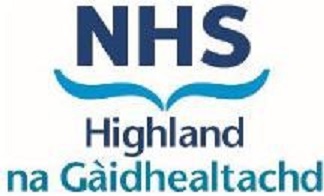|
PLUS OPIOID |
||
|
PLUS NSAID |
PLUS NSAID | |
|
PARACETAMOL |
PARACETAMOL | PARACETAMOL |
|
MILD PAIN |
INCREASING PAIN |
MODERATE TO SEVERE PAIN |
- See dosing range charts, below.
- ALL prescriptions MUST be reviewed every 24 hours.

|
PLUS OPIOID |
||
|
PLUS NSAID |
PLUS NSAID | |
|
PARACETAMOL |
PARACETAMOL | PARACETAMOL |
|
MILD PAIN |
INCREASING PAIN |
MODERATE TO SEVERE PAIN |
|
Age |
Dose |
Interval |
Max Daily Dose |
|
Pre-term neonate 28 to 32 weeks corrected gestational age |
10mg/kg |
8 hourly up to three times daily |
30mg/kg/day |
|
Neonate over 32 weeks corrected gestational age |
15mg/kg |
6 hourly up to four times daily |
60mg/kg/day |
|
1 month to 18 years |
15mg/kg up to a max of 1g |
4 hourly up to four times daily |
75mg/kg/day |
|
Age |
Dose |
Interval |
Max Daily Dose |
|
1 to 3 months |
60mg |
Every 4 hours |
75mg/kg/day |
|
3 to 12 months |
60 to 120mg | Every 4 hours |
4 doses in 24 hours (or 75mg/kg/day) |
|
1 to 5 years |
120 to 240mg | Every 4 hours |
4 doses in 24 hours (or 75mg/kg/day) |
| 5 to 12 years |
240mg to 500mg |
Every 4 hours |
4 doses in 24 hours (or 75mg/kg/day. Maximum 4g daily) |
|
12 to 18 years |
12 to 18 years |
Every 4 hours |
4 doses in 24 hours |
| Patient | Dose | Interval | Max Daily Dose |
|
Pre-term Neonate over 32 weeks corrected gestational age |
7.5 mg/kg | 8 hourly | 22.5mg/kg/day |
|
Term Neonate |
10 mg/kg | 4 hourly, up to three times daily | 30mg/kg/day |
|
Child under 10kg |
10 mg/kg | 4 hourly, up to three times daily | 30mg/kg/day |
|
Child 10 to 50kg |
15 mg/kg | 4 hourly, up to four times daily | 60mg/kg/day |
|
Child over 50kg |
1g | 4 hourly, up to four times daily | 4g/day |
NSAIDs may have adverse effects so care should be taken when determining if NSAIDs are suitable for patients and when prescribing/ reviewing therapy. Please check through the list below before prescribing NSAIDs.
Cautions: see list on NSAID flowchart.
| Age |
Standard Dose |
Standard Interval
|
Maximum Dose |
|
1 to 3 months |
5mg/kg |
6 to 8 hourly |
up to four times daily |
|
3 months to 18 years |
5mg/kg up to 400mg |
6 to 8 hourly, up to three times daily |
7.5mg/kg as a single dose up to 30mg/kg/day |
|
Age |
Dose |
Interval |
Comment |
|
6 months to 18 years |
0.3 to 1mg/kg up to 50 mg |
8 hourly | The dose must be adjusted according to the suppository strength available |
|
Age
|
Dose |
Interval
|
|
6 months to 17 years |
Oramorph |
Up to 2 hourly |
|
Over 12 years |
Dihydrocodeine |
Up to 4 hourly |
Oral opioids have the same side effects as parenteral opioids and the following need to be carried out:
Oral opioids have the same side effects as parenteral opioids and the following need to be carried out:
|
Age |
Breaths per minute |
| Less than 6 months | below 20 breaths per minute |
| 6 months to 2 years | below 16 breaths per minute |
| 2 years to 7 years | below 14 breaths per minute |
| 8 years and over | below 10 breaths per minute |
|
Age |
Breaths per minute |
| Less than 6 months | below 18 breaths per minute |
| 6 months to 2 years | below 14 breaths per minute |
| 2 years to 7 years | below 12 breaths per minute |
| 8 years and over | below 8 breaths per minute |
Constipation
Nausea and Vomiting
Itching
Oxycodone oral solution (1mg/ml) can be used as an alternative strong opioid when morphine is contraindicated. This is not a stock medication and must be ordered in advance through pharmacy. The dosing regimes in the BNFc are for moderate to severe oncological pain and a 30 to 50% dose reduction may be more appropriate for treatment of moderate post-operative pain.